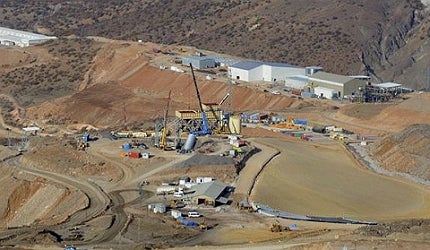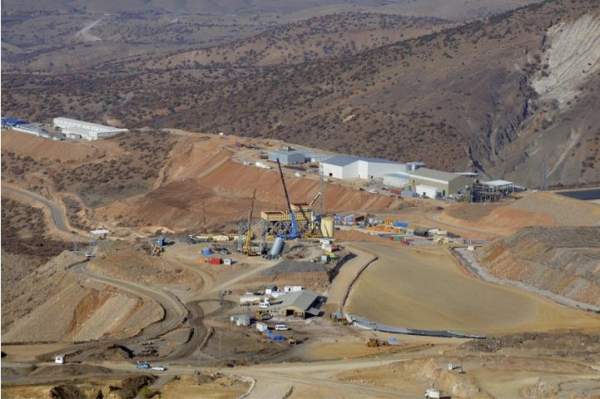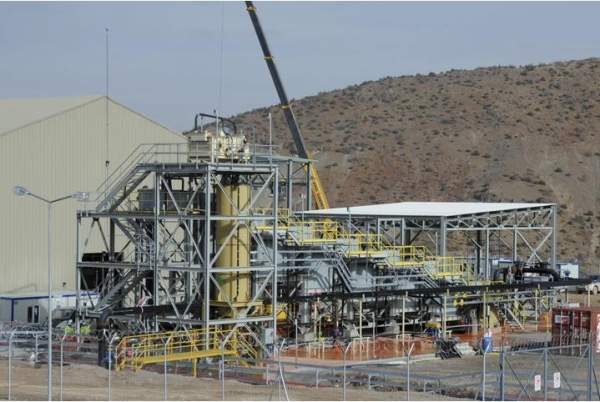
Çöpler Gold is an open-pit mine located 550km east of Ankara and 120km south-west of the city of Erzincan in the eastern part of Turkey. It is 95% owned by Alacer Gold and five percent by Turkey-based Lydia Maden Isletmelers. Alacer Gold was formed by the merger of Anatolia Minerals Development and Avoca Resources in February 2011.
Anatolia Minerals acquired interest in the Çöpler Gold Mine in September 1998 and obtained 100% control in January 2004. After the merger, Alacer Gold sold its five percent interest in the mine to Lydia Maden in August 2009.
The project achieved financial closure in April 2009 and is claimed to be the first mine in Turkey to receive financing. The estimated cost of the project is $250m. UniCredit is the project sponsor.
The project is designed to process 5.4 million tons (mt) of sulphide ore a year. Construction works commenced in September 2009 and the first gold pour was achieved in December 2010, a year after commencing mining operations. Commercial production began in April 2011.
A prefeasibility study (PFS) was conducted to determine the presence of deeper sulphide ores to expand production at a later stage.
The PFS was completed in March 2011 and showed positive results, projecting an increase in production by 182% from 1.3Moz to 3.7Moz, while extending the mine’s life from nine to 16 years. More than 50km of drilling was completed in 2011.
Parallel to the on-going drilling programme, Alacer is currently carrying out a detailed sulphide feasibility study (DFS). The study is expected to be completed in by the end of 2012 with a target production date of 2014. The project will require an initial investment of $410m.
Gold reserves and geology of the Turkish mine
As of December 2011, proven and probable reserves at Çöpler Gold Mine were 95.4mt at an average grade of 1.4g/t of gold.
The gold reserves at the site increased from 2.2 million ounces (Moz) to 4.6Moz, according to the PFS report.
The mine is a low sulphidation epithermal gold deposit. It is surrounded by a composite of diorite to monzonite porphyry stock, which are both igneous rocks formed under the Earth’s surface.
The rock formation is uneven and intervened by two parallel striking faults which allow hydrothermal mineralisation. One of the faults runs in east-north-east direction. The other smaller strike fault runs in northeast and northwest directions.
Gold mineralisation at the mine occurs in oxide and sulphide ores. The feasibility of extracting gold from sulphide ores is currently at advanced stages.
Processing gold and ore from the Çöpler deposit
Oxide ore extracted from the open-pit mine is being processed through a simple crush, agglomeration and heap leach circuit.
The deeper sulphide ores will be processed using conventional crushing and milling and then sent to pressure oxidation circuit.
The pressure oxidation circuit will have a throughput of 8,000t of ore a day. It will recover 94.4% of gold and 75.2% of copper from a total of 33.1mt of sulphide ore.
Production rates and future expectations at Turkey’s Çöpler gold mine
The project is designed for a mill throughput of 5,000 tons a day (tpd) and 10,000tpd of heap leach. It produced 113,861oz of gold in 2011.
The mine is expected to produce 195,000-200,000oz of gold in 2012. The deeper sulphide production will increase gold output by additional 2.25Moz.
Gold production in the first two months of operation was 9,102oz. At the end of March 2011, approximately 1.69mt of ore on the pad was ready for leaching.
The current operations include mining of about 8mt of ore at 2.4g/t grade for 612,000oz of sulphide material. Despite low leach recovery, the ore is being economically treated due to the presence of high sulphide ore.
Alacer intends to produce 800,000oz of gold a year by 2015.






